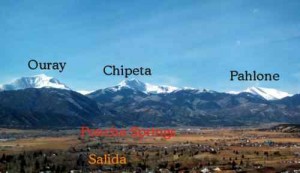Letter from Ide Trotter
Science – December 2004 – Colorado Central Magazine –
To the Editor:
It is hard to know where to start in my comments about George Sibley’s “Time for a Truce?” in the November Colorado Central. So I’ll start in the middle and work toward the edges.
He quotes from Thomas Kuhn’s “Structure of Scientific Revolutions,” the most cited work of the 20th Century, in an effort to support his questionable thesis that the scientific revolution has not been consummated. The idea that science has not triumphed must have come as a considerable surprise to most of your readers
Apparently Sibley’s problem is that he has succumbed to the common misunderstanding that several normally separate scientific domains fall within some all-embracing notion of evolution, a term in serious need of definition if meaningful discussion is to be undertaken. Evolution can of course be understood as any change occurring over time. However scientific understanding of cosmic evolution that stems from the Copernican revolution needs to be understood as governed by theories of quantum mechanics and general relativity. This is wholly separate from any mechanism postulated for natural selection that undergirds the Darwinian theory of evolution.
And certainly evolution in the Darwinian sense is not all of science, as Sibley seems to imply. Should none of the many postulated “Darwinian” mechanisms be able to stand under the growing accumulation of contradictory evidence, science as an enterprise will be none the worse for it.
Should notions of gradual Darwinian evolution as the explanation of all it has claimed to explain disappear from the face of the earth, science will in fact be marching on to a new paradigm, just as Kuhn has led us to anticipate. There are many indications that this is indeed in process:
First, as science delves deeper into the fossil record it seems clear that early notions of gradual evolution have to be replaced. The new name for high-speed evolution is punctuated equilibrium. But there is no generally accepted underlying mechanism rooted in fundamental physics and chemistry available to produce such a rapid process. Second, as science delves deeper into the complexities of the intricate machinery of life the challenges to be explained by random process have grown exponentially. Finally, as it becomes clearer that the processes of life are under the control of what amounts to the computer code embodied in DNA, science is grappling with the question, “Where did all that information come from?” To date there is no clue as to how information can be produced by random processes.
It appears that a scientific revolution is called for to resolve these imponderables. Sibley need not worry that any election will materially impact this process no matter what he may see as its religious overtones.
Now lets turn to Sibley’s concern that “stages in the scientific revolution have been vigorously and vehemently opposed by the guardians of religious orthodoxy.” No doubt there have been many unfortunate examples of this. What is less widely recognized is that guardians of scientific orthodoxy have been, and are to this day, equally as vigorous in fighting rear guard actions as their cherished notions are challenged and eventually succumb to overwhelming evidence.
Pertinent to Sibley’s 15th Headwaters Conference: The Second Great Ethic is the recent sad case of attempted scientific “book burning” over Dr. Bjorn Lomborg’s eye-opening book, The Skeptical Environmentalist: Measuring the State of the Real World.
Some of your readers may recall that a Danish kangaroo court, the Danish Committee on Scientific Dishonesty, reckoned Dr. Lomborg’s book as “deemed to fall within the concept of scientific dishonesty.” However, late last year this “incompetent and shameful” determination, quoting the assessment of the Economist, was vacated by Denmark’s Ministry of Science, Technology, and Innovation for failures of documentation and other grievous scientific shortcomings.
One hopes that Sibley and company will take note of this sad exercise and adhere to the ethical and scientific high road in their discussions. Good science vs. bad and unethical “science” are more likely at the core of resolving the real issues facing western states. But if Sibley and his friends are objective and truly “scientific” when addressing God and science, at least no harm should be done.
Ide Trotter
Poncha Springs


